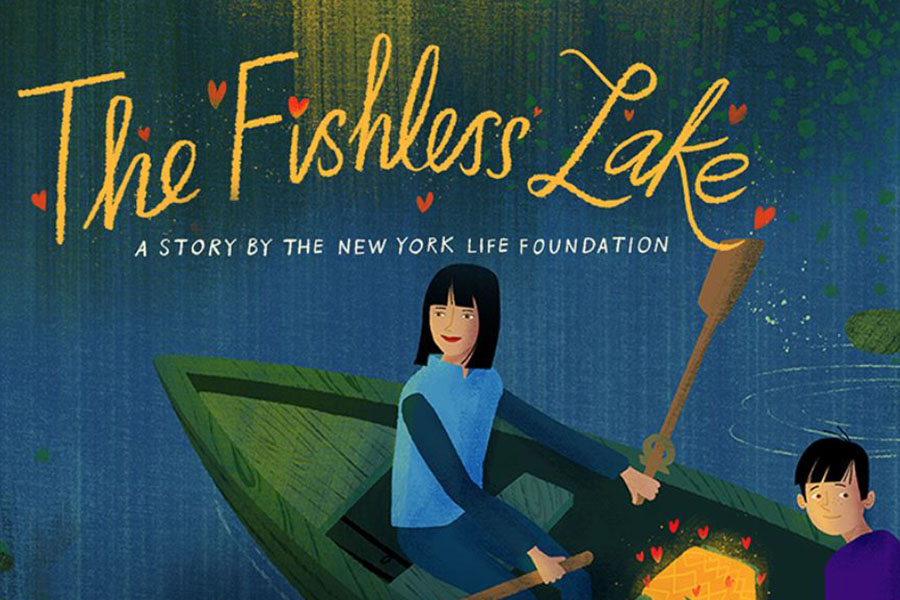The Fishless Lake
How does a child survive and even thrive following a traumatic loss? Research tells us that most children go on to lead fulfilling lives following one of the most traumatic experiences of childhood, the death of their parent. How does this happen? What are the resources that promote resilience for bereaved children? The New York Life Foundation’s beautifully-illustrated Children’s Book Series, Kai’s Journey, provides insight into the functioning of one critical resilience resource for bereaved children, their bereaved parent. In the third book of Kai’s Journey, The Fishless Lake, we see Kai’s mother as a beautiful example of a parent promoting her child’s resilience by helping him stay connected with his deceased father and at the same time strengthening her own positive bond with her son.
Scientific research indicates that the positive effect that Kai’s mother has on his grief journey is not just part of a lovely fictional story. Many studies have found that the quality of parenting children receive after the death is one of the most powerful factors that is associated with the resilience of bereaved children. Our own research over the past 30 years has taught us a great deal about the power of parents to support their grieving children. We’ve even developed a program that teaches parents and caregivers practical tools to help build the resilient family that helps their children deal with their grief and the many stressors in their lives following the death, and go on to lead healthy and satisfying lives. The program includes practical tools that we call the Five Building Blocks of Resilient Parenting for Bereaved Families including: 1. Parents own self-care; 2. Strengthening their positive bonds with their children; 3. Listening to encourage their children to share more; 4. Effective family rules; and 5. Supporting children’s coping. Our research has shown that children who participated in our program had less distressing grief and lower levels of mental health problems years later. We have also learned that quality of parenting was a critical factor that contributed to the benefits experienced by the children who participated. With the support of the New York Life Foundation we will be able to train those who work with bereaved families to bring this program to the public.
Remarkably, the tools that we teach can also be found in children’s literature; you just have to look carefully. For example, take Kai’s Journey, the three-book series, from the New York Life Foundation discussed earlier. In the background, always within sight but never dominating, is Kai’s mother. And she is practicing the building blocks of resilient parenting! Her role comes into focus in book 3, The Fishless Lake. She’s a good listener, noticing the nonverbal cues Kai is giving about missing his father. She provides support for Kai’s desire to retain the positive memories of his father by going to their favorite spot where Kai and his father would spend time without catching any fish. She doesn’t make the mistake that many of us might by talking about their inability to catch any fish. Instead, and most importantly, she focuses on just being there, spending positive time with Kai, laughing and enjoying each other as they remembered Kai’s father. As they both share sweet memories, they become more connected to each other and to Kai’s dad.
As I read this story, I couldn’t help but think about Kai’s mother. She made supporting her grieving son look so natural and she made it look so easy to know just the right thing to do. She listened to Kai’s feelings and helped Kai bring back sweet memories of his father. But, I know from hearing the stories of hundreds of parents and caregivers that it is anything but easy to parent a bereaved child. Particularly when you’re grieving yourself, struggling to keep your family afloat or during a lock down caused by a pandemic. How do you take care of yourself so that you have the energy to listen so attentively to your child’s feelings? How do you find the time to fit positive, simply enjoyable activities with your children into your busy and often hectic life? I like to think that the programs we’ve developed can help parents find answers to these kinds of questions.



